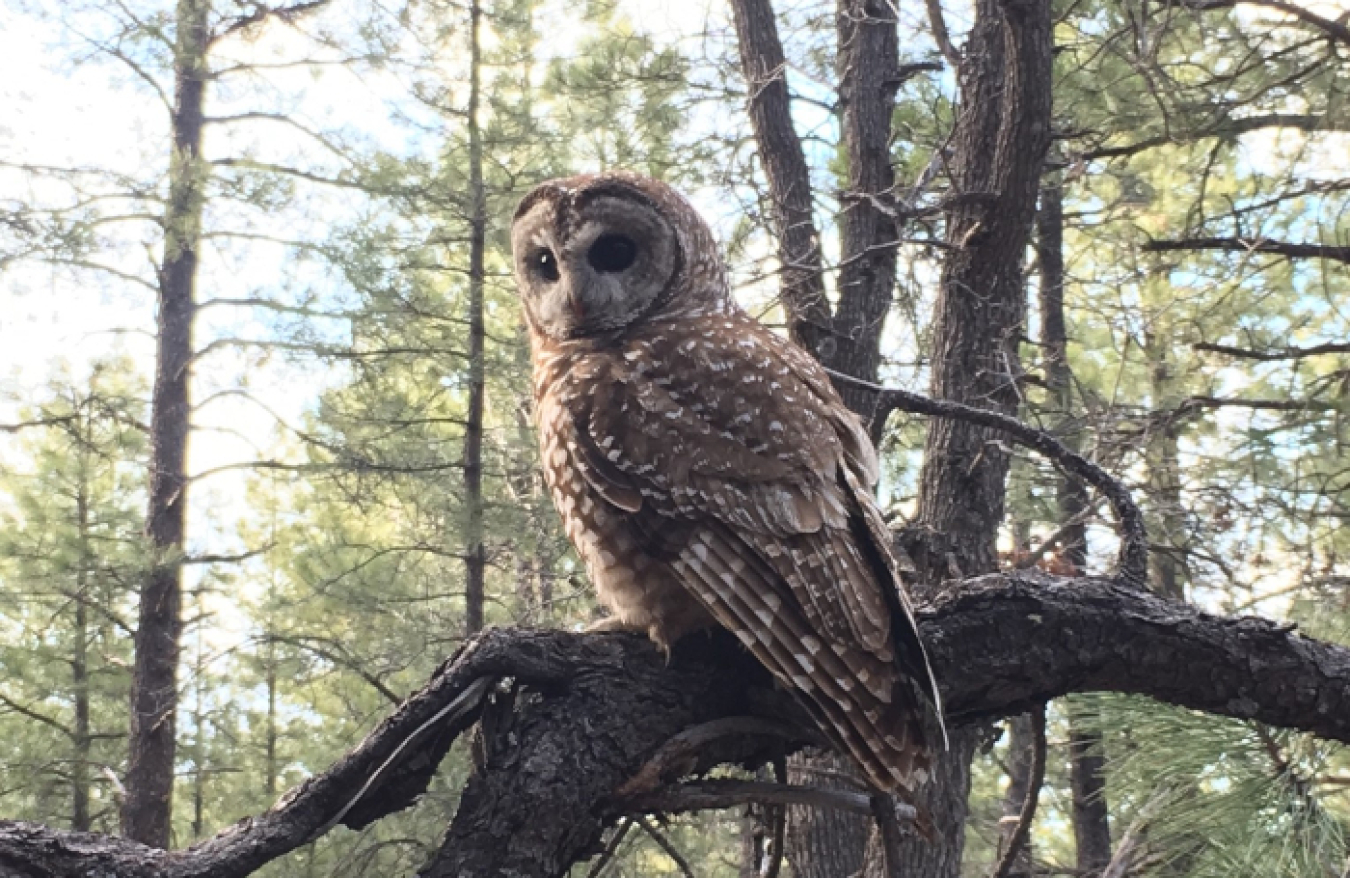To protect a treasured ecological species of northern New Mexico, EM-LA and primary contractor N3B on March 1 began their annual task of modifying legacy waste cleanup activities at LANL ahead of the Mexican spotted owl breeding season.
Office of Environmental Management
March 30, 2021
LOS ALAMOS, N.M. – To protect a treasured ecological species of northern New Mexico, EM’s Los Alamos Field Office (EM-LA) and primary contractor N3B on March 1 began their annual task of modifying legacy waste cleanup activities at Los Alamos National Laboratory (LANL) ahead of the Mexican spotted owl breeding season.
The U.S. Fish and Wildlife Service (USFWS) listed the Mexican spotted owl as a threatened species in 1993, when population numbers were decreasing drastically due to the loss, degradation, and fragmentation of their habitat.
In 1999, DOE and the National Nuclear Security Administration coordinated with the USFWS to create a habitat management plan to safeguard protected species at LANL.
In compliance with that plan, EM-LA and N3B modify fieldwork each year during the spotted owl’s breeding season in locations identified as core habitat areas and buffer zones. Such areas — typically rocky, steep-walled canyons and old growth conifer and pine-oak forests — contain ideal nesting habitats for New Mexico’s spotted owls, which generally return to the same nests each year. The buffer zone, which extends 400 meters past the core habitat area, provides further protection.
“In addition to experiencing habitat degradation, spotted owls, which typically have the same mates for life, have a low reproduction rate, so survivability of their offspring is incredibly important,” N3B environmental specialist Don Ulrich said.
Activities that EM-LA and N3B modify include those that cause habitat alterations — or changes to the soil structure, vegetation, prey quality and quantity, water quality, or noise and light levels — regardless of whether survey crews identify owl nesting pairs.
In areas where crews do locate nesting pairs, so-called disturbance activities are also avoided. Areas with known spotted owls remain restricted through Aug. 31. In areas where owls aren’t detected, regular fieldwork may resume as early as May 31.
“Project managers know the closures come every year, so they plan ahead and prioritize other projects,” Ulrich said. “The owls’ existence is valuable, and we strive to protect and create space for other species.”
With USFWS concurrence, all sampling and monitoring of groundwater, surface water, stormwater, and sediment will continue during nesting season These activities ensure EM-LA maintains compliance with the 2016 Consent Order for site cleanup.
To receive the latest news and updates about the Office of Environmental Management, submit your e-mail address.

